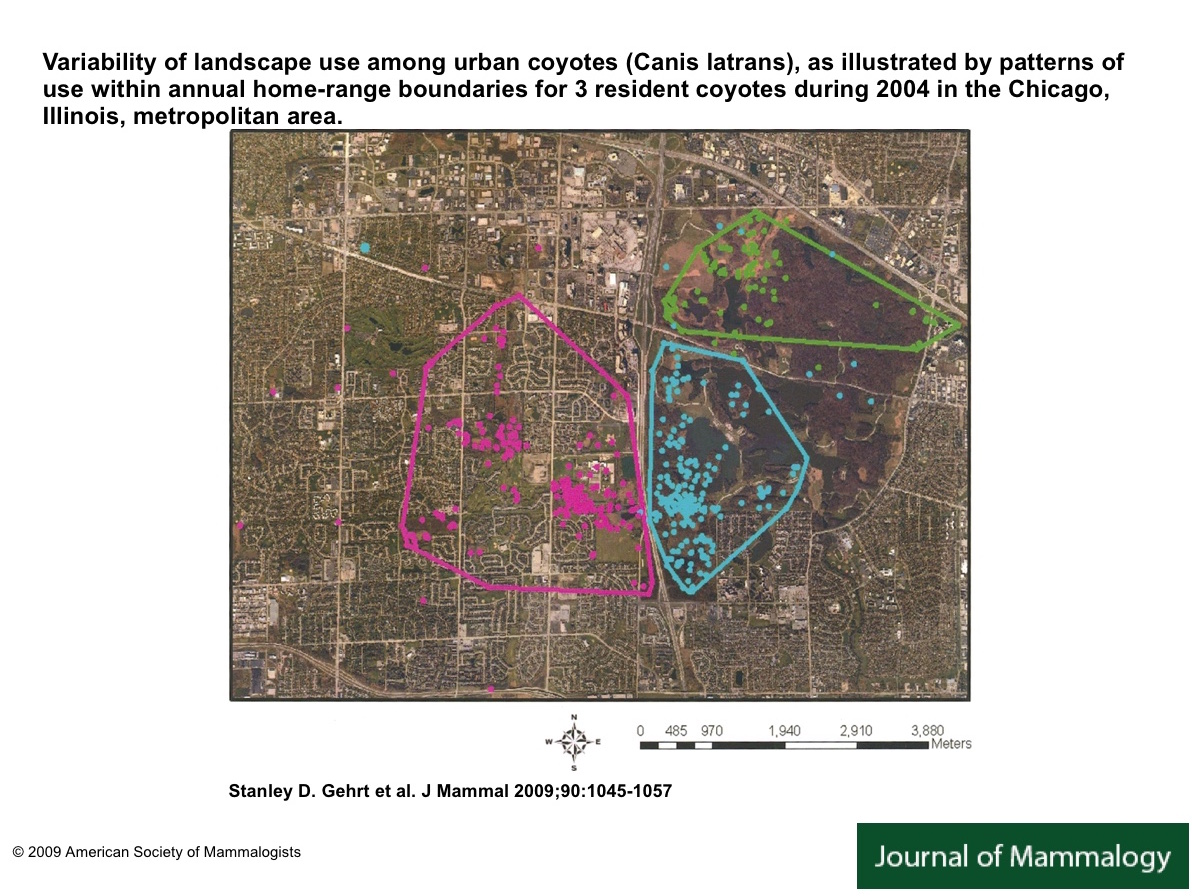Home Range and Landscape Use of Coyotes in a Metropolitan Landscape- Conflict or Coexistence?

Abstract
An understanding of how top mammalian carnivores respond to urbanization is important for conservation and management of human–wildlife conflicts. Coyotes (Canis latrans) have recently become more prevalent in many metropolitan areas; however, their apparent success is poorly understood. We estimated home-range size and selection of land-use types for coyotes in a heavily urbanized landscape, with a particular focus on responses of coyotes to those parts of the urban landscape with high levels of human development or activity. Mean (± SE) annual home ranges of transient coyotes (X̄ = 26.80 ± 2.95 km2) were larger than those of resident coyotes (X̄ = 4.95 ± 0.34 km2), and home-range size for resident coyotes did not vary among seasons or between age and sex classes. Although most home ranges were associated with natural patches of habitat, there was considerable variation among coyotes, with some home ranges entirely lacking patches of natural habitat. Within home ranges, coyotes typically avoided land-use types associated with human activity (i.e., Residential, Urban Grass, and Urban Land) regardless of coyote characteristics, seasons, and activity periods. Few coyotes were nuisances, and conflicts occurred when coyotes were sick or exposed to wildlife feeding by humans. We found little evidence that coyotes were attracted to areas associated with human activity, despite at times having home ranges located in heavily developed areas.
